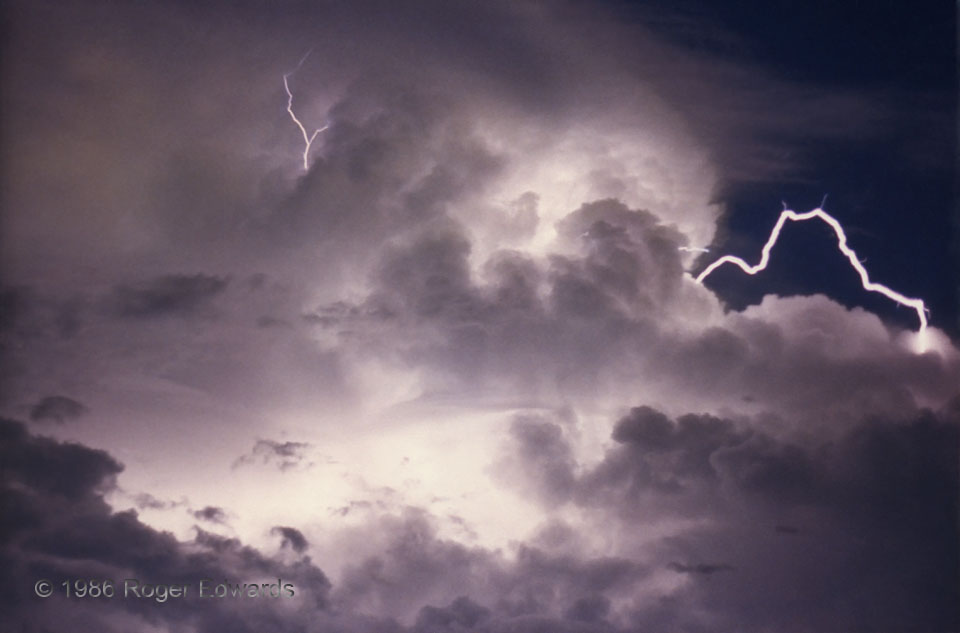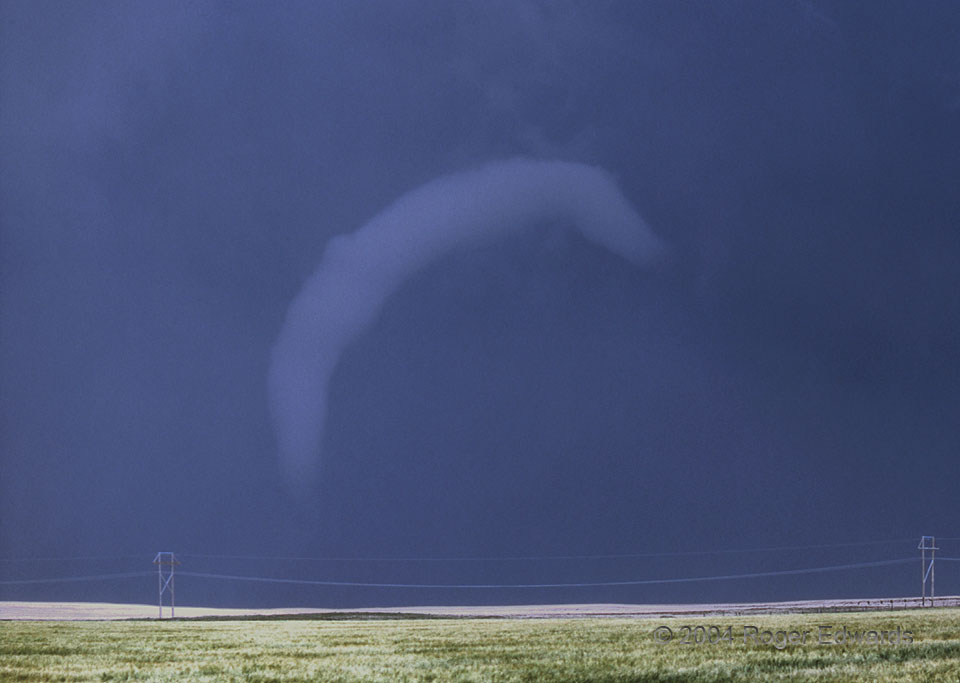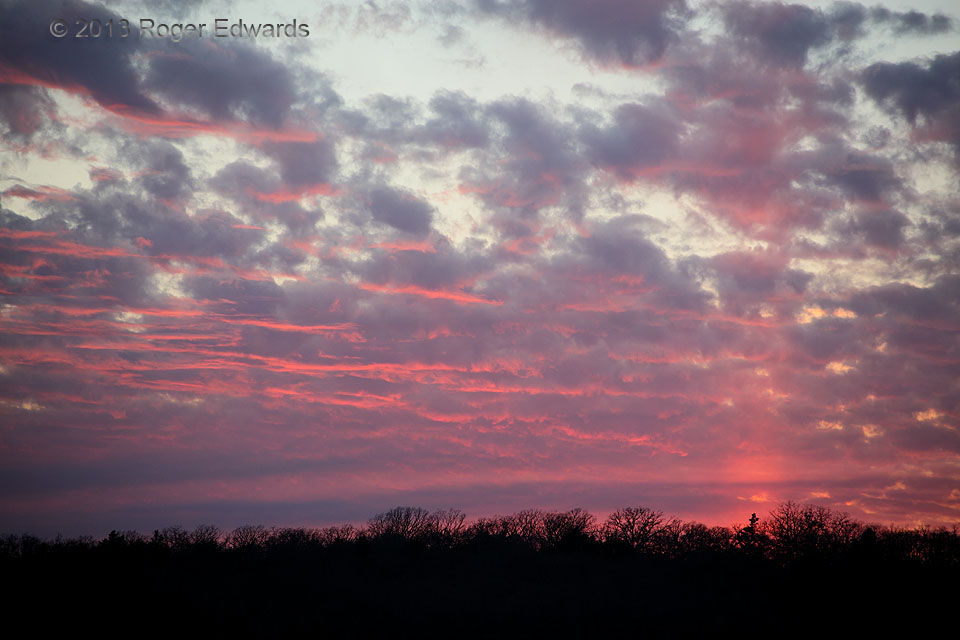This was my first night lightning photo, using a car top to brace a then-20-year-old Mamiya 35-mm SLR. A bolt hurdled thousands of feet of clear air between the main storm tower and a flanking tower, prompting shouts of, "Did you get that, did you get that?" from Rich Thompson, who was standing nearby enjoying the electrical display. Back then, I had to wait days until the slide film was … [Read more...]
Sea of Stratocumulus
Gently convective, yet also partly stratified, this unbroken cloud deck would appear opaque and rather drab from below, with no substantial openings of sunlight reaching the ground—all these characteristics earning the formation the Latin name stratocumulus opacus. From above, the cloud deck gently rolled like an ocean of cottony vapors, trapped beneath an inversion of dry, stable air through … [Read more...]
Sky Worm
In a final encore, a tornado emerges from the rain one last time and stretches out, its condensation funnel taking on the shape of a worm against the slate-blue background of the supercell's precipitation area. This tornado began in Nebraska, within less than two miles of the Colorado border. Initially a tall, thin, dusty tube (that stage not shown because of driving for position and poor … [Read more...]
Sun Pillar
Usually, sun pillars (right) develop under thin, high clouds that drop plate-shaped ice crystals (snow) which reflect the low-angle sunlight back to the attentive eyeball. Here, some of those crystals were being launched by convective clouds—specifically altocumulus formations that earlier offered a beautifully geometric pattern in the sky. In wintertime, ice-process altocumuli are common; the … [Read more...]
Snow Shadows in the Woods
Textures of snow, crossed by tree shadows, create a sparkling, banded wintertime landscape. Wintertime in the snowy woods is one of the quietest experiences, the silence broken only by the occasional, lonesome call of a cold and hungry bird, or soft puff of snow cascading off a branch. Norman OK (6 Dec 13) Looking NW … [Read more...]
The Window
One of the great places of the Great Plains, "The Window" or "Keyhole" of Monument Rocks offers a peek not only through an eroded butte, but into the power of water—drops at a time. Once, around a million years ago, a blanket of High Plains sediments, washed by streams from the Rockies, covered this area much deeper than any of the Cretaceous chalk which forms the buttes here. Water carried … [Read more...]
- « Previous Page
- 1
- …
- 282
- 283
- 284
- 285
- 286
- …
- 386
- Next Page »





